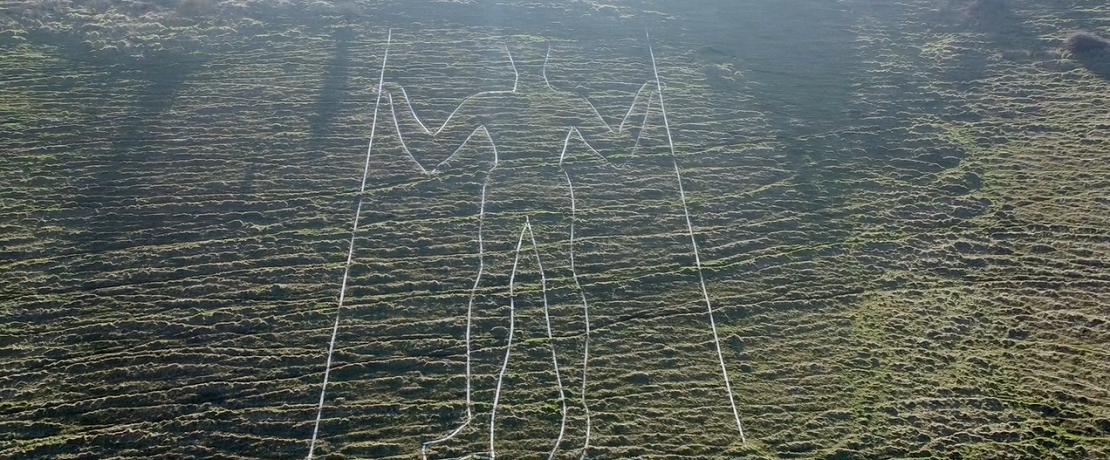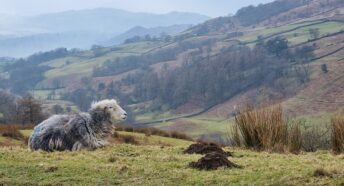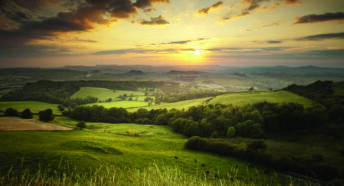Chalking it up: the mysterious figures striding across our hills
They stride the hillsides and downs, impressive and sometimes mysterious. Who made them and why? Tim Friend goes in search of the chalk figures of England – from unfeasibly tall men to surprising antipodean birds.
The Long Man of Wilmington is not all he appears to be. As we approach on a cold but sunny winter’s day, he seems to be cut out of the crisp white chalk of the South Downs. His imperious 235-feet high figure gazes out from the steep slopes of Windover Hill, a stave in each hand. But as you draw close, it’s clear that his sturdy permanence is due to more modern building methods: white painted breeze blocks. More jobbing builder than mystic creation? The arguments about his origins – like those of many other English chalk figures – have raged for centuries.
Latest thinking suggests the Long Man is from the 16th or 17th century, possibly religious, perhaps political satire. At one time he was thought to be much earlier, Iron Age or even Neolithic. The remaining uncertainty is part of his allure. Was he cut by monks from a nearby priory to represent a pilgrim, or to mark the constellation Orion’s movement across the ridge of the Downs? He’s inspired authors and musicians.
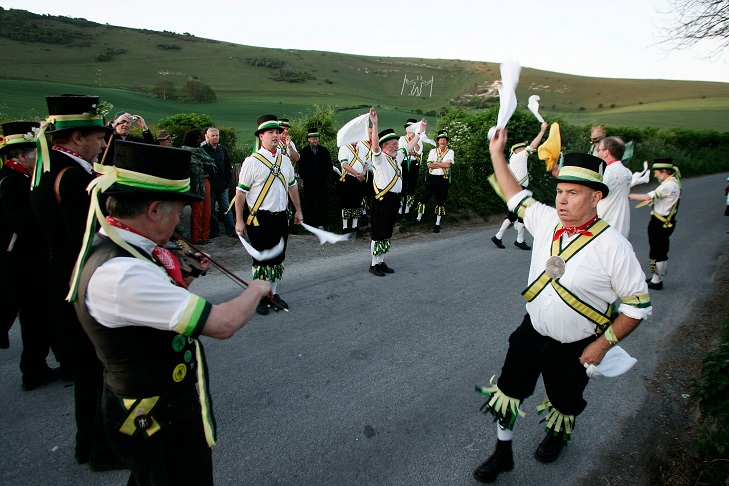
His current shape is thanks to the vicar of nearby Glynde in 1873, armed with whitewashed bricks – although some locals with long memories said he’d distorted the Long Man’s feet in the process. The use of imported materials to outline chalk figures is quite common, helping to battle the onslaught of grass and weeds. But during the Second World War, the Long Man – like all hill figures – was deliberately painted green, to prevent him being used as a landmark by enemy aircraft.
Despite his relatively recent ‘modern’ restoration, he’s revered by pagans who hold rituals in his shadow, as well as Morris Men who dance there at dawn each May Day. (See Tim talk more on The Long Man of Wilmington on YouTube.)
The Long Man is six miles northwest of Eastbourne in East Sussex. There are plenty of walks nearby and good access to view from the village car park. From there, it’s a 20-minute walk to the foot of the Long Man. But it’s from a distance, of course, that his full height is most appreciated.
The Long Man is one of two hill figures in East Sussex. The Litlington White Horse lies a walkable three miles to the south-west, the latest 93ft by 65ft version cut by a group of friends in a single night in 1924. An earlier effort – possibly to celebrate Victoria’s coronation – had succumbed to weeds.
On the peak of Hindover Hill is a free car park in Alfriston Road, just a short walk down to the White Horse. There’s a better view across the valley by walking south along the banks of the River Cuckmere from Litlington village.
Dorset’s giant
Apart from the Long Man, the only other major extant human hill figure in England is the Cerne Abbas Giant, source of schoolboy, and a few adult, giggles, in spite of his respectability as a scheduled ancient monument. He’s probably England’s best-known giant, standing 180 feet high above the Dorset countryside.
In 2021, after 12 months’ scientific analysis, archaeologists concluded the club-wielding figure was first made in the late Saxon period. Generations have speculated about his age and meaning: a fertility symbol, a depiction of Hercules – or even Oliver Cromwell.
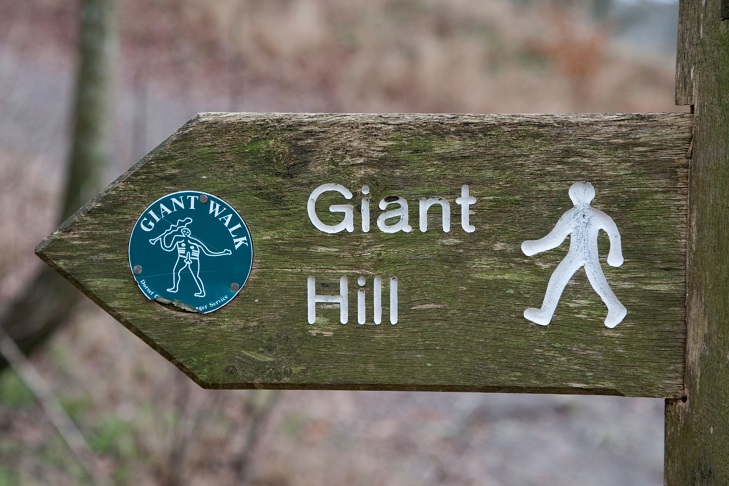
The best place to see him is the Giant’s View car park, or there’s a short walk from there up to the Giant’s feet. There’s also a hike up Giant’s Hill and around the perimeter fence that protects him…not always successfully. In 2007, pagans promised to conjure some ‘rain magic’ to erase a figure of Homer Simpson which was painted next to the giant. Homer was depicted in his underpants (unlike the giant) and holding a up a doughnut to promote a new Simpsons film. The pagan magic clearly worked: rain did eventually wash away the biodegradable paint.
Not all figures are ancient. The Folkestone White Horse sparked a very modern controversy. Carved into Cheriton Hill in 2003, it overlooks the Channel Tunnel terminal. It was proposed as a project to help regenerate the area, but the government watchdog, English Nature, opposed its creation because it was a Site of Special Scientific Interest. After a public inquiry, the horse was given the go-ahead. However, the battle wasn’t over.
The Green Party and Friends of the Earth took their fight to EU, saying the site was protected under the European Habitats Directive. The EU ordered the UK government to explain, but it was too late: a team of volunteers including locally-based Gurkha soldiers, had already cut the first turfs. The EU notice is still outstanding … but events have moved on. This walk in the area gives you a view of the white horse.
An ancient masterpiece
The prehistoric Uffington White Horse, in Oxfordshire is 360 feet long and by far the oldest of the white horse figures in England. It’s a scheduled monument, but also a masterpiece of minimalist art, totally unlike its successors.
In 2019, workers unearthed an almost 3,000-year-old settlement that archaeologists believe belonged to the same community involved in the creation of the White Horse. The find includes tools, animal bones and the remains of 26 people whose skeletons suggest human sacrifice. In midwinter, the horse aligns with the sun, which appears to overtake the horse, reflecting mythological beliefs that the sun was carried across the sky on a horse or in a chariot.
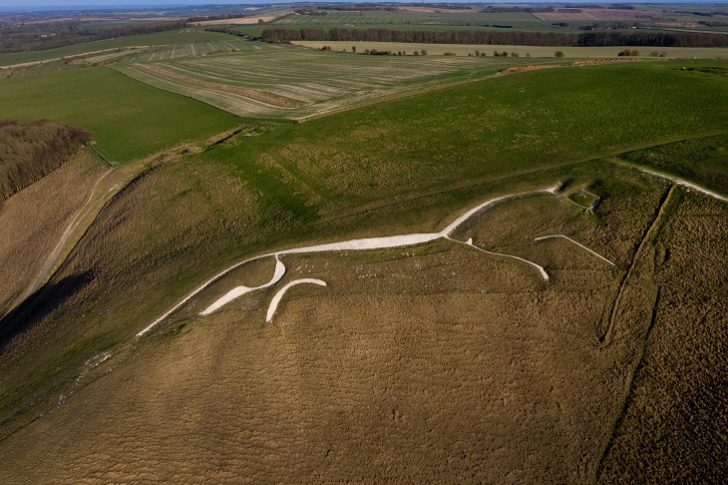
The best views of the figure are from directly across the Vale of the White Horse, particularly around the villages of Coxwell, Longcot and Fernham and you can walk up to the horse on this circular route from the National Trust car park.
From ancient to modern
The Fovant Badges are regimental badges cut into Fovant Down, Wiltshire. They were made by soldiers waiting to go to France during the First World War and can be seen clearly from the A30 road. The Imperial War Museum recognises them as war memorials.
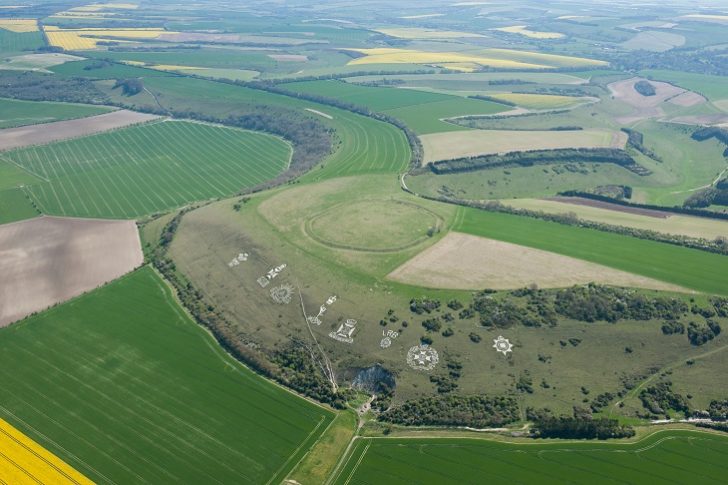
About 20 miles away is the Bulford Kiwi, created by soldiers of the New Zealand Expeditionary Force in 1919. Bored and anxious to get home, they began rioting, until their commanding officer ordered the carving as a distraction. The Kiwi shoe polish company paid for its upkeep after the men finally returned down under. It can be seen from Tidworth Road, and it’s possible to walk up to the 420 feet monument from there.
The most northerly
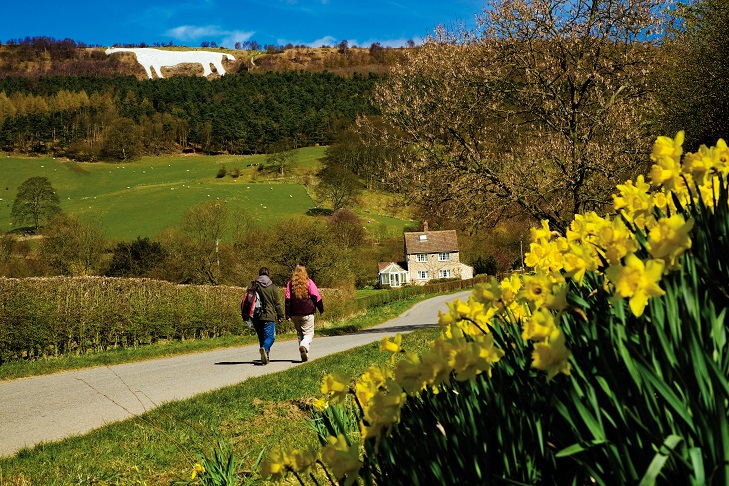
The terrain and soil of southern England lends itself to hill figures, but cut into the hillside of the North York Moors National Park, is the Kilburn White Horse – the most northerly in England. On a clear day it’s visible from Leeds 28 miles away. There’s a car park and a footpath up to the horse.
